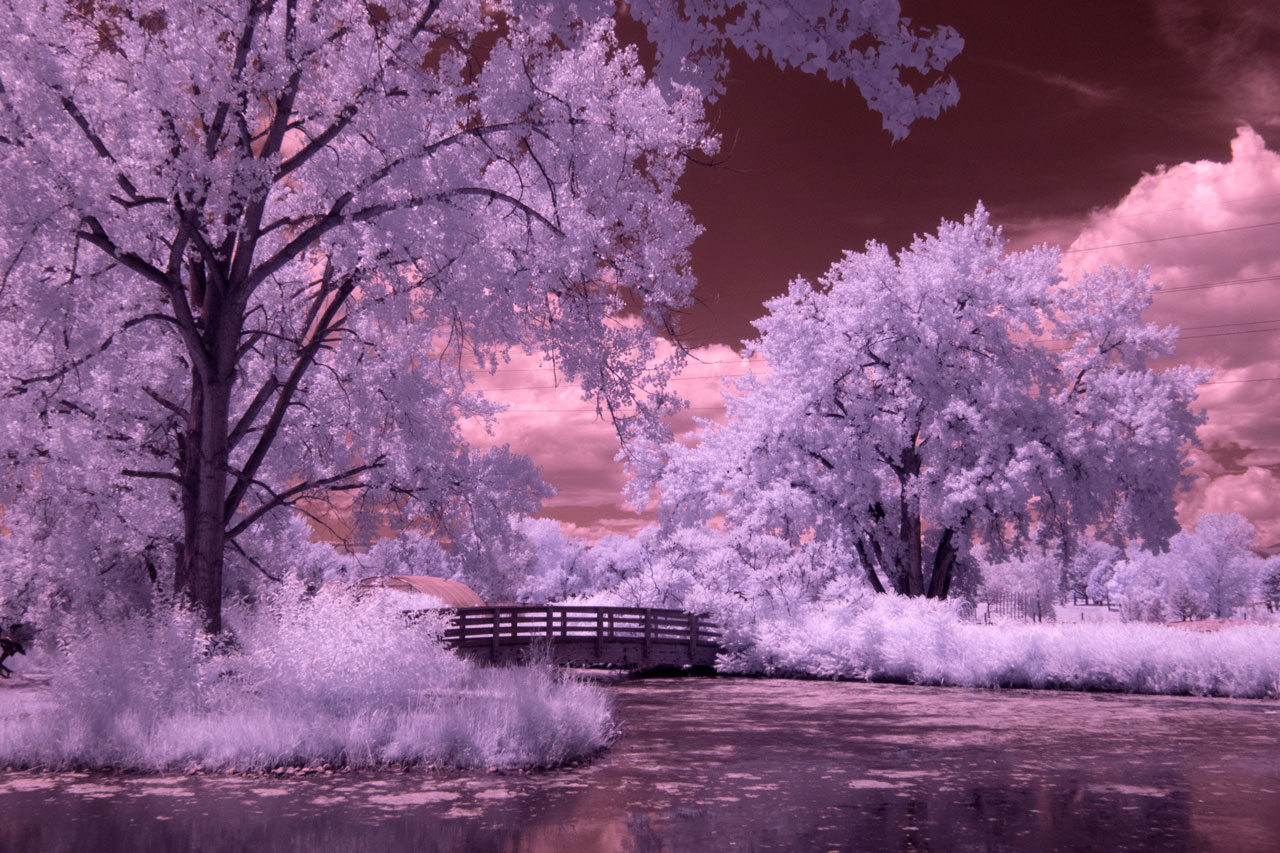Spring may be officially here but nobody has told the weather. It snowed yesterday and it was 15 degrees F when I got up this morning. And so while I’m dreamin’ about Infrared Weather, I’ll have to make do with today’s post while looking forward to another IR photowalk with my friend Barry.
Today’s Post by Joe Farace
Back when Shutterbug was a print magazine, I once received an e-mail from a reader asking, “Why do you do infrared photography, when regular photography is already so hard?
 My answer to her had more to do with how new photographers go through three distinct phases when honing their image making skills. Here’s my take:
My answer to her had more to do with how new photographers go through three distinct phases when honing their image making skills. Here’s my take:
- The First Stage occurs immediately after they get their first “good” camera and discover photography’s potential as a medium for expression and a way to have fun. During this time, newbie shooters explore their world with a high level of enthusiasm and every batch of images contains photographs that look so much better than they could ever imagined. Unfortunately, this blissful period doesn’t last long and is replaced with…
- Stage Two: During this period the shooter’s level of enthusiasm is still high but is diminished when reviewing his or her newest images only to discover they are much worse than they had expected. It is the “shoot more and enjoying it less” phase of their photographic education.
- Stage Three occurs after the photographer improves their skills by reading books/blogs, attending workshops but most importantly by practicing their craft. In this phase, the images seen in their camera’s viewfinder is exactly what they expected. There are no surprises. While reaching this phase can be fulfilling, some of the magic is gone and sometimes, photographers become discouraged and slip back into Phase 2. The real danger is that the photographer keeps shooting the same images over and over again without realizing it.

Here’s the short answer to my reader’s question: It’s really not that hard. Look around this blog for lots of tips on becoming an infrared shooter. Click on the small magnifying glass symbol in the upper right-hand corner and type “infrared” in the text box and you’ll find lots of how-to posts.
If you would like to experience some of the same thrill of discovery that occurred during the first phase of your photographic education, my suggestion is that you never stop exploring the many possibilities that photography offers. Try some new things. Maybe it’s infrared photography, as shown in the example above, because when you give IR photography a try you’re immediately tossed back into Phase 1 and every image that you capture will be a surprise and, more often than not, a pleasant one. Whatever you do try something outside your normal comfort zone.
How I made this shot: This photograph was made at Littleton, Colorado’s Hudson Gardens when my friend and legendary photojournalist Barry Staver had a bit of an infrared PhotoWalk.The property is composed of thirty acres of garden exhibits, trails, natural terrain and event venues and was opened to the public in June 1996
The above photograph was shot using a Panasonic Lumix G6 with Olympus M.Zuiko 17mm f/2.8 with an exposure of 1/250 sec at f/16 and ISO 400. The as-captured RAW file is shown at above right. That image file can be converted using an optional Photoshop action (IR Channel Swap w/ white foliage) that Life Pixel used to offer with their IR conversions. It was further tweaked with PictoColor iCorrect Portrait to minimize the blue in the clouds and warm up the tonality of the foliage in the process.
 I’ve found that Life Pixel does a great job with IR conversions and they have done most of the conversions for my Canon DSLRs and all of my Panasonic Lumix G-series cameras. This is not a paid or sponsored endorsement, just my experience.
I’ve found that Life Pixel does a great job with IR conversions and they have done most of the conversions for my Canon DSLRs and all of my Panasonic Lumix G-series cameras. This is not a paid or sponsored endorsement, just my experience.
My book, The Complete Guide to Digital Infrared Photography is available new for $55 with used copies stating at around ten bucks from Amazon as I write this. Creative Digital Monochrome Effects has a chapter on IR photography and is available from Amazon for $5.95 with used copies starting around $4.00; it’s a bargain